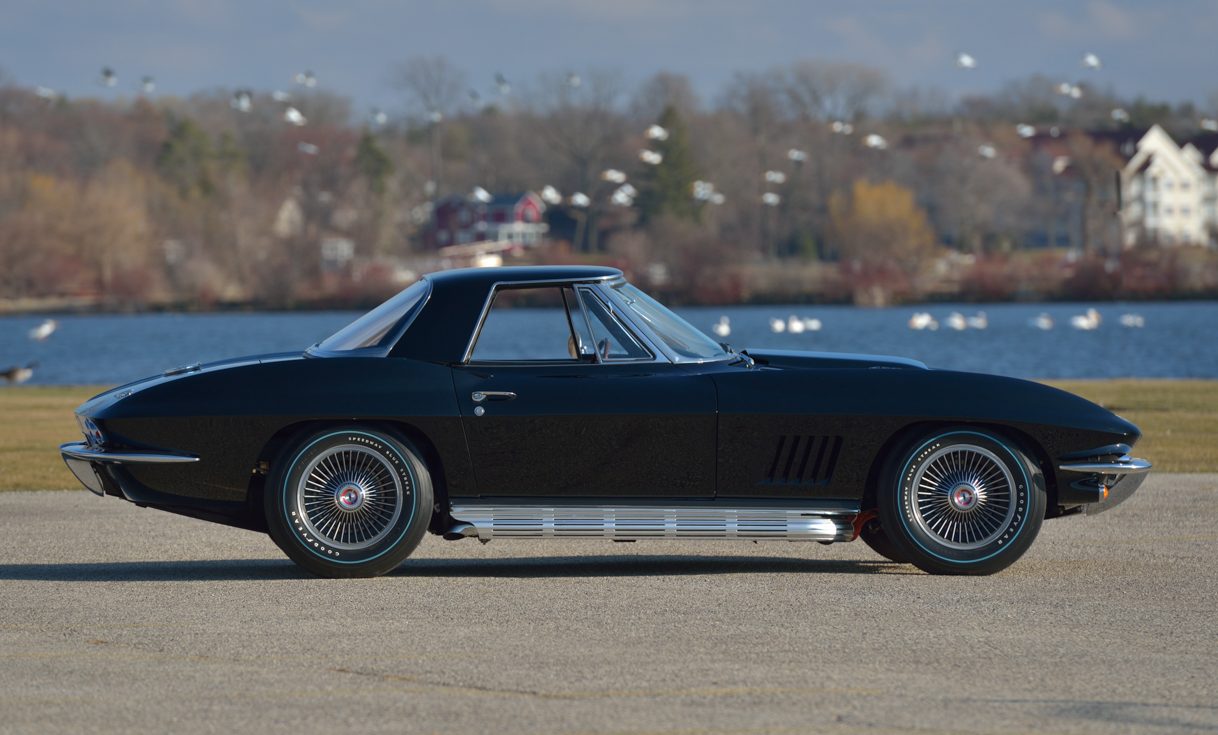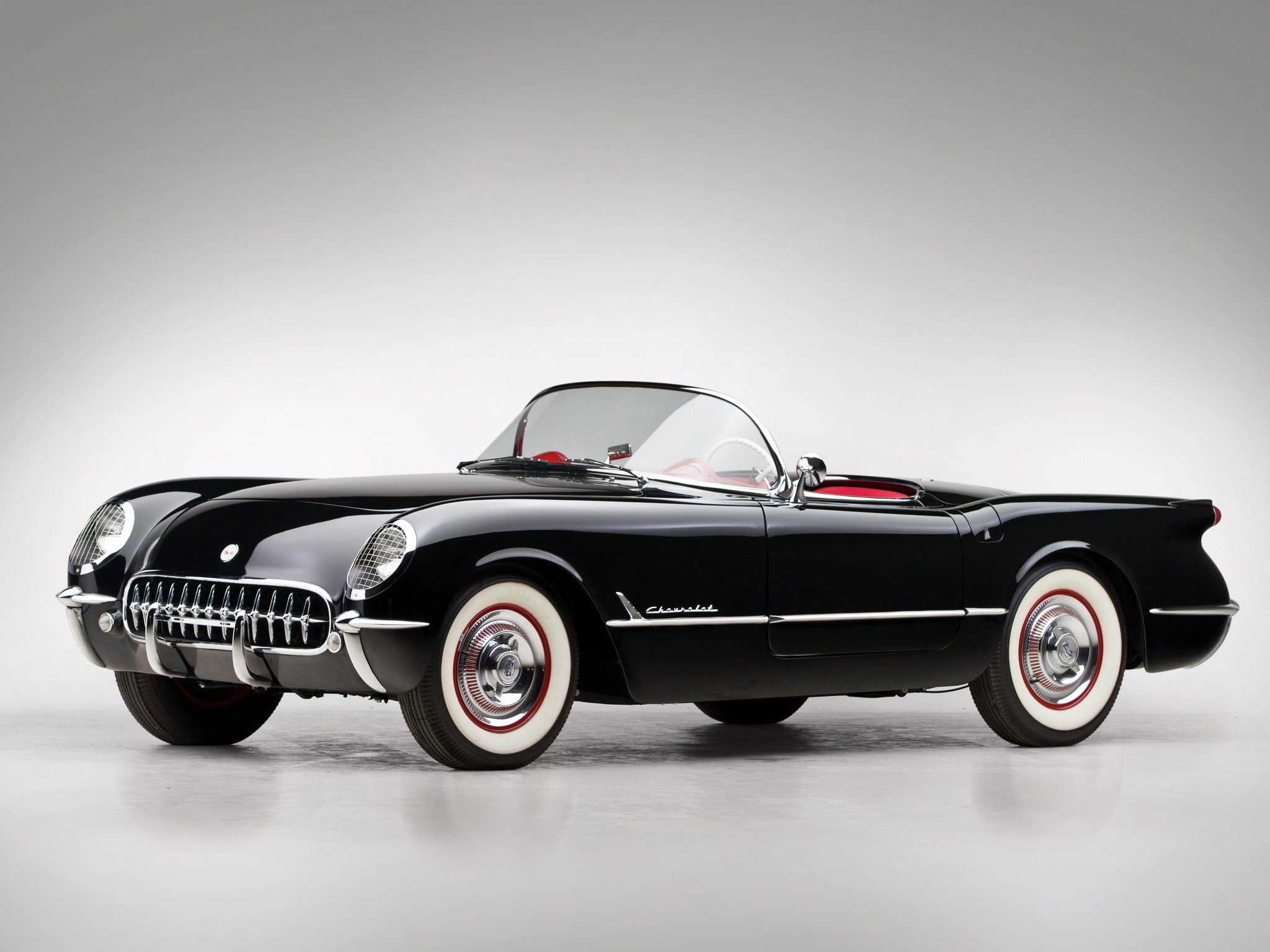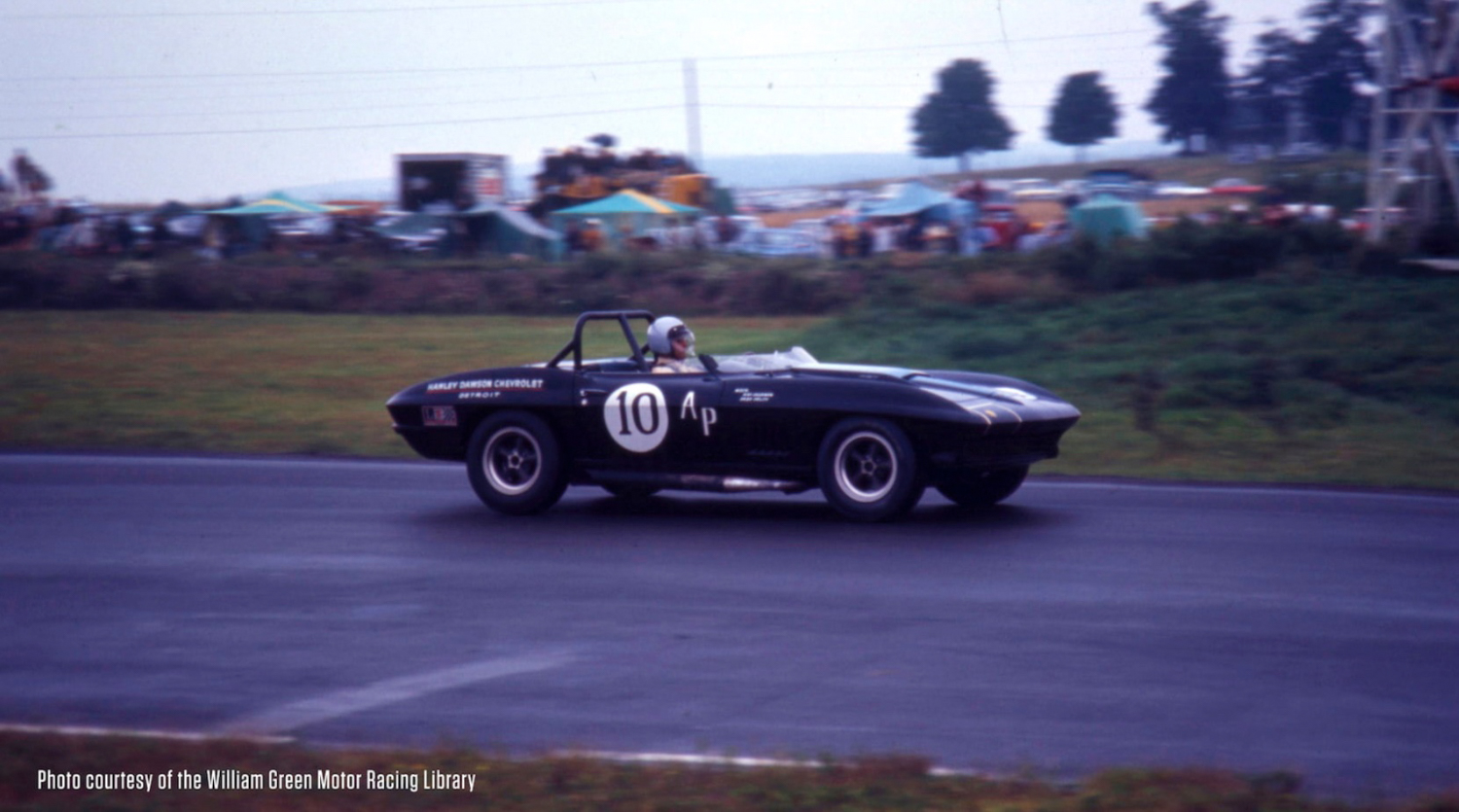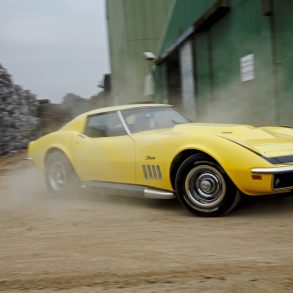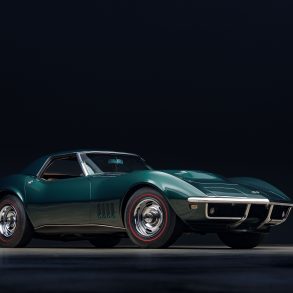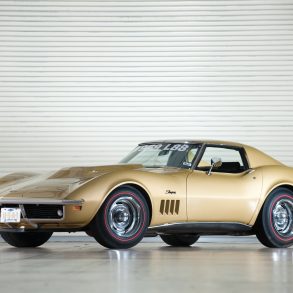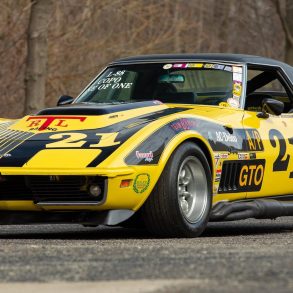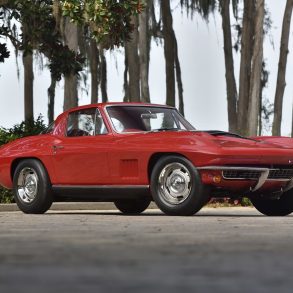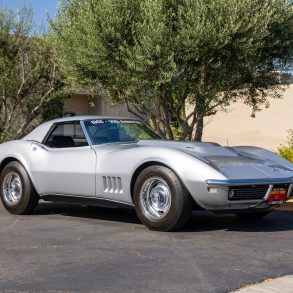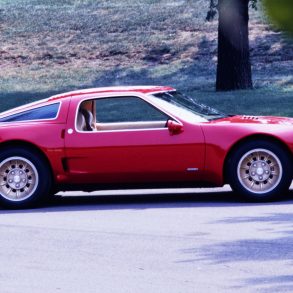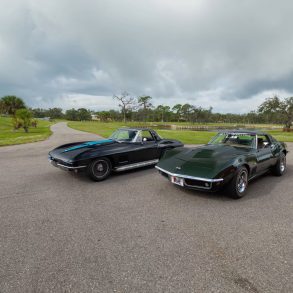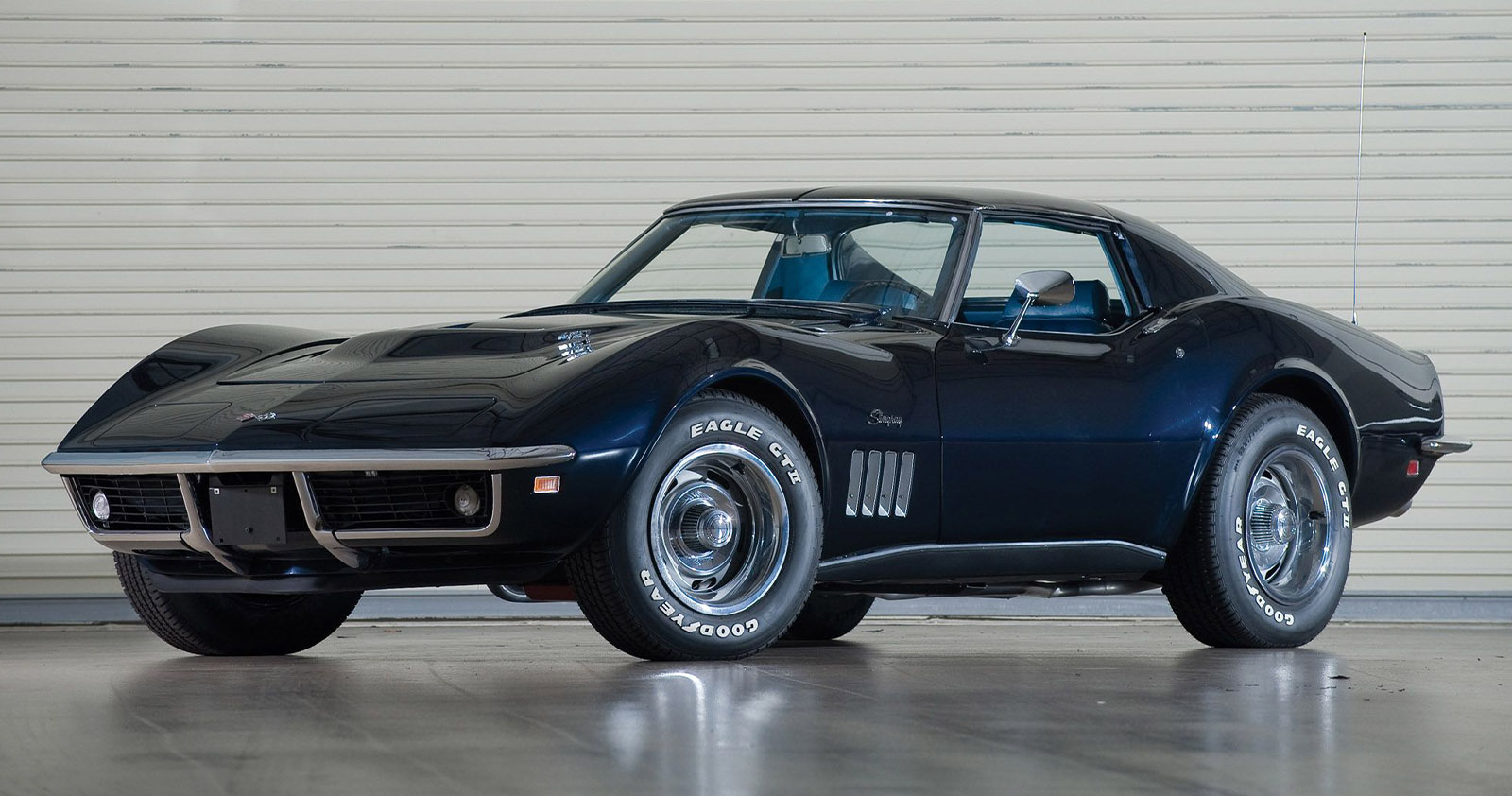This article was first published on our sister site SportsCarDigest.com. It has been re-published for CorvSport readers to enjoy.
This 1967 Chevrolet Corvette Convertible was the first Corvette produced with the RPO L88 option package. The only Tuxedo Black 1967 L88 built in convertible form, it was driven in competition by Tony DeLorenzo Jr., one of the most successful Corvette racers in history.
The son of GM Public Relations Executive Anthony G. DeLorenzo, Tony’s association with high-performance GM machinery dated back to his early youth, when the family driveway was home to an ongoing parade of factory executive demonstrators that included 389 Tri-Power Pontiacs, a customized and turbocharged 1963 Corvair from GM Styling Chief Bill Mitchell’s personal collection, and Chevrolet General Manager Ed Cole’s Silver fuel-injected 1963 Corvette split-window coupe, which he loaned to DeLorenzo Sr. before production officially began.
When Tony’s attention turned to sports car racing, he asked his father if he could order a new 1964 Corvette company car for the summer. Unaware that his son planned to take the Corvette to the SCCA’s driving school at Watkins Glen, New York, Anthony DeLorenzo Sr. agreed to place the order, which young Tony and his older brother Peter specified as a black-on-black coupe with fuel injection, an M20 4-speed manual transmission, heavy-duty finned drum brakes, knock-off aluminum wheels and radio delete. Immediately upon its arrival, the brothers prepared the Corvette for track duty, stripping it down and installing a roll bar.
As recently recounted by Peter, one day while working at his summer job with Chevrolet Sales Promotion, Tony received the phone call of a lifetime. On the other end of the line was Corvette Godfather Zora Arkus-Duntov, who after enquiring as to Tony’s plans for the Corvette, asked him to deliver the car to Chevrolet Engineering in Warren, Michigan, to “take care of a few things.” Arkus-Duntov soon presented Tony with his Corvette, which had been extensively modified, including revisions to the brakes, suspension and engine. The trip to Watkins Glen ended with the chief instructor telling Tony he didn’t need any more instruction, and his racing career began soon after at the wheel of a more affordable 1965 Corvair.
As Tony polished his driving skills in SCCA A Production competition, Arkus-Duntov’s Corvette Engineering Group back in Warren began developing the new 427 Mark IV engine for use in the Corvette as a full-bore endurance racing engine, and in 1967, their work came to fruition as the centerpiece of the racing-purposed RPO L88 option package. Using a reinforced cast-iron block with 4-bolt mains and incorporating a forged and Tuftrided steel crank, forged rods, 12.5:1 pistons, aluminum heads, a radical solid-lifter cam, a dual-feed Holley 850 CFM 4-barrel carburetor atop a plenumed aluminum intake manifold, and K66 transistorized ignition, the L88 was a formidable powerplant. While what little company literature there was rated the L88 engine at a paltry 430 HP, it could in fact be tuned to produce approximately 560 HP at its 6,400 RPM redline and 470 lb-ft of torque at 5,200 RPM.
In addition to the mighty Mark IV engine, the L88 option could only be had with a lightweight flywheel and heavy-duty clutch, a required M22 “Rock Crusher” 4-speed manual transmission, J50 special heavy-duty power brakes with J56 heavy-duty calipers, F41 suspension, the bullet-proof G81 Positraction rear end, special cross-flow radiator and radio/heater delete; it gave the Corvette almost boundless potential in competition.
The L88 instantly established its racing dominance with the Tuxedo Black 1967 convertible offered here, the very first regular-production L88 Corvette built. It was delivered to Hanley Dawson Chevrolet in Detroit, which also supplied the young DeLorenzo with all the equipment and financial backing necessary to mount a full campaign in SCCA A Production racing. Delivered into the Hanley shops directly from the transporter, the car was immediately prepped to A Production specs and then entered into its first event at Wilmot Hills, Wisconsin, which it won going away. At the next event at Elkhart Lake, the car’s 155 MPH top speed was such a shock to Anthony DeLorenzo Sr., who was watching from the pit straight, that it was two years before he would attend another of his son’s races.



